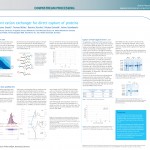
Ion-exchange chromatography is widely used for the purification of biotherapeutic proteins. Usually, cation exchangers are applied in the primary capture step of proteins with alkaline pI. Conventional ion-exchange chromatography has the advantage of high-binding capacity, but it requires low salt conditions for protein binding and consequently adjustment of conductivity of clarified culture supernatant. An alternative method to maintain some binding capacity at higher conductivity levels is working at low pH condi¬tions notwithstanding that some proteins are sensitive to acid treatment.
Cation exchangers with more hydrophobic characteristics show higher binding affinity to proteins than conventional mono-functional resins. In this work, a hydrophobically modified cation exchanger resin was used for the direct capture of monoclonal antibodies and antibody fragments avoiding pre-treatment steps like desalting or dilution. The capture was feasible after sole pH adjustment of culture supernatant to pH 5–6. Good recovery yields were found by elution gradients employing buffers of increasing salt concentration and increasing pH. As a result, purifica¬tion of recombinant proteins from culture supernatant was successful with minimal pre-treatment of the feedstream.
